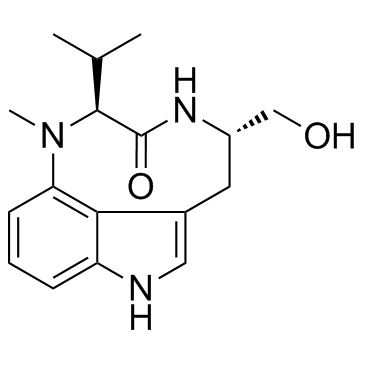Protein kinase signalling requirements for metabotropic action of kainate receptors in rat CA1 pyramidal neurones.
Gintautas Grabauskas, Barrie Lancaster, Vincent O'Connor, Howard V Wheal
Index: J. Physiol. 579(Pt 2) , 363-73, (2007)
Full Text: HTML
Abstract
Hippocampal pyramidal neurones display a Ca(2+)-dependent K(+) current responsible for the slow afterhyperpolarization (I(sAHP)), a prominent regulator of excitability. There is considerable transmitter convergence onto I(sAHP) but little information about the interplay between the kinase-based transduction mechanisms underlying transmitter action. We have added to existing information about the role of protein kinase C (PKC) in kainate receptor actions by demonstrating that direct postsynaptic activation of PKC with either 1-oleoyl-2-acethylsn-glycerol (OAG) or indolactam is sufficient to inhibit I(sAHP). The physiological correlate of this action - activation of PKC by kainate receptors - requires G alpha(i/o) proteins. The cAMP/PKA system is well documented to subserve the actions of monoamine transmitters. We have found an additional role for the cAMP/PKA system as a requirement for kainate receptor-mediated inhibition of I(sAHP). Inhibition of adenylyl cyclase with dideoxyadenosine or PKA with either H89 or RpcAMPs blocked kainate receptor-mediated actions but did not prevent the actions of direct PKC activation with either OAG or indolactam. We therefore propose that the PKA requirement is upstream from the actions of PKC. We additionally report a downstream link in the form of increased mitogen-activated protein (MAP) kinase activity, which may explain the long duration of metabotropic actions of kainate receptors on I(sAHP).
Related Compounds
| Structure | Name/CAS No. | Molecular Formula | Articles |
|---|---|---|---|
 |
(-)-Indolactam V
CAS:90365-57-4 |
C17H23N3O2 |
|
Structural basis of RasGRP binding to high-affinity PKC liga...
2002-02-14 [J. Med. Chem. 45(4) , 853-60, (2002)] |
|
Tumor promoter binding of the protein kinase C C1 homology d...
2004-09-01 [Bioorg. Med. Chem. 12(17) , 4575-83, (2004)] |
|
Indolactam and benzolactam compounds as new medicinal leads ...
2004-01-01 [Curr. Pharm. Des. 10(12) , 1371-85, (2004)] |
|
Binding selectivity of conformationally restricted analogues...
2002-07-01 [Biosci. Biotechnol. Biochem. 66(7) , 1615-7, (2002)] |
|
Identification of protein kinase C activation as a novel mec...
2014-10-01 [Mol. Pharmacol. 86(4) , 406-16, (2014)] |